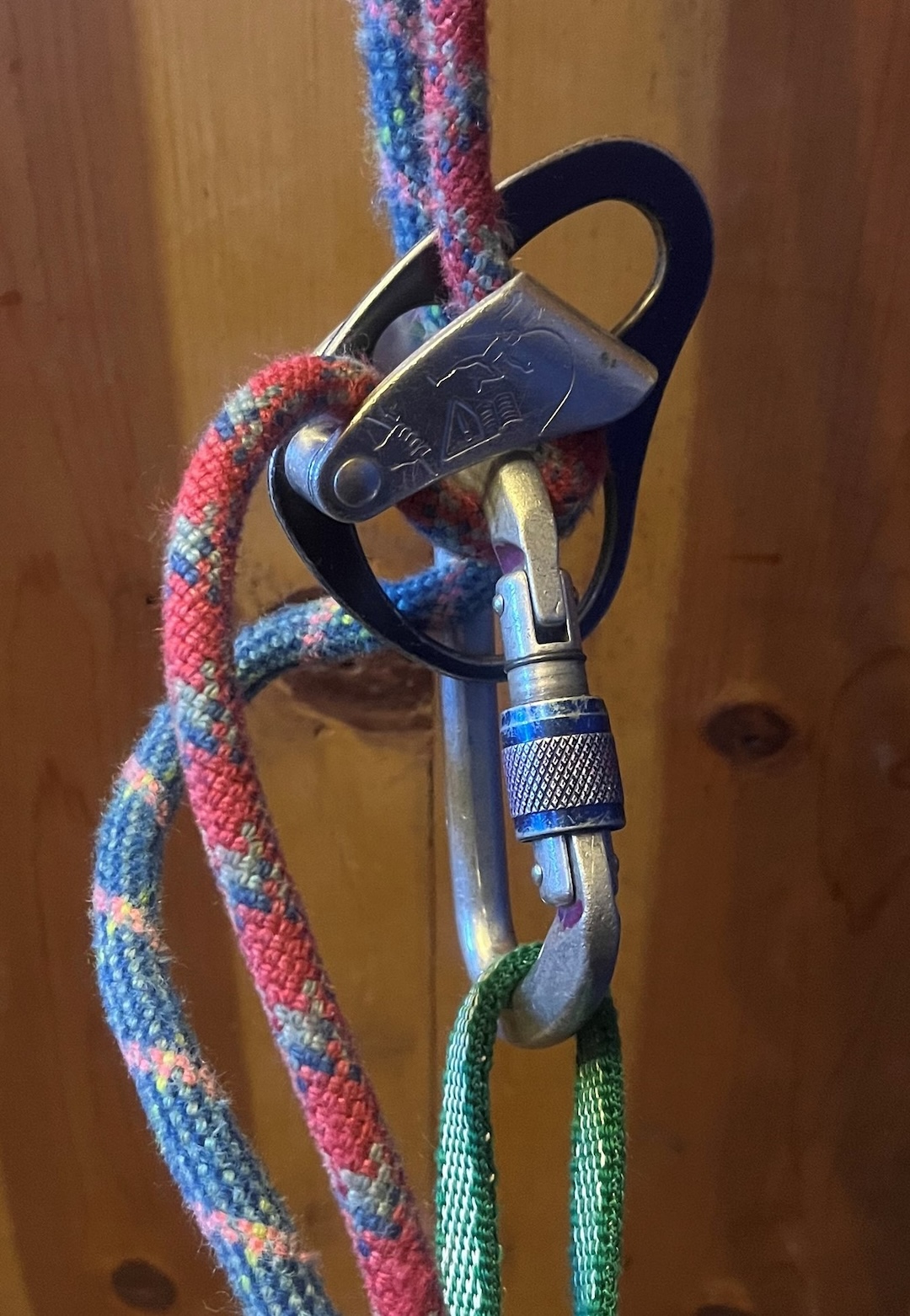Fatal Fall on Rappel — Lost Control of Rope
Massachusetts, Leominster State Forest, Crow Hill
 On July 11, RC (male, 69) and Joel were climbing at Crow Hill, a popular area with 100-foot-high cliffs. Both climbers were familiar with the area and quite experienced. They climbed pitch one of Outersite (5.7), then followed a bushy, left-trending ramp and finishing on pitch two of The Chimney (5.6). RC led the route in a single pitch. As Joel followed, he was stung several times by wasps. To avoid more stings, RC lowered Joel to the ground from mid-height. RC elected to rappel and retrieve two cams remaining in the final slot of The Chimney.
On July 11, RC (male, 69) and Joel were climbing at Crow Hill, a popular area with 100-foot-high cliffs. Both climbers were familiar with the area and quite experienced. They climbed pitch one of Outersite (5.7), then followed a bushy, left-trending ramp and finishing on pitch two of The Chimney (5.6). RC led the route in a single pitch. As Joel followed, he was stung several times by wasps. To avoid more stings, RC lowered Joel to the ground from mid-height. RC elected to rappel and retrieve two cams remaining in the final slot of The Chimney.
Rappelling this link-up was complicated. There is no fixed anchor on top of The Chimney. That route’s exit slot and the left-trending ramp below prevented a straight-down rappel. RC chose to build a rappel anchor 20 feet to climber’s right of the top of The Chimney. He girth-hitched a tree with his PAS and two locking carabiners. RC was known to be safe and conscientious.
Starting the rappel, RC lost control, falling 120 feet to the base and tumbling before coming to rest on the trail. Joel initiated CPR but discontinued due to RC’s extensive trauma. The police eventually arrived at the scene of the fatal incident.
ANALYSIS
RC’s rope had been pulled down from the anchor, with a large amount of slack tangled in the trees. The rope was partly draped on the cliff above, and the rappel anchor was intact. The carabiners at the anchor were still locked.
RC’s partner reports that the fallen climber had failed to thread both rope strands through his rappel device. As the single strand was weighted, the other end slid through the anchor. He had recently begun using a “third hand” prusik as a backup, but it was a new technique and not yet second nature. He may have been distracted by the heat, the cam retrieval, and certainly concerned by the angry wasps.
Safe rappelling is dependent on a sound anchor and execution. When you set up the rappel, make sure both strands are through the rappel device. Use stopper knots in both ends of the rope and be sure both ends reach the ground or the next anchor. Use a prusik or other third hand to back up your manual control of the rope. Double-check your setup and, when possible, have a partner also check it. (Sources: Joel and Christopher McKenzie, Massachusetts State Police, and the Editors.)

